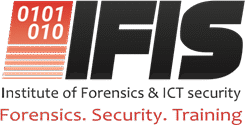Cybersecurity is now an integrity issue. Academic credibility is one breach away. In June, I wrote to several universities and training institutions urging them to rethink their cybersecurity and examination systems. I got no response. Perhaps they still believe cybersecurity is an IT issue, not an integrity issue.
Artificial Intelligence has become the new exam leak. Students no longer smuggle notes; they smuggle algorithms. They do not copy answers; they generate them. The crisis is no longer about cheating; it’s about credibility.
AI is quietly eroding the trust in academic qualifications. Employers now ask, “Did this graduate learn or just generate?” The distinction between brilliance and plagiarism is disappearing. Universities that ignore this shift are preparing students for a world that no longer exists.
This is why cybersecurity and academic reform must now move together. The next breach won’t come from a hacker; it will come from a chatbot.
Join us this Cybersecurity Awareness Month. Attend and sponsor the Cybersecurity and Risk Management Conference on 16th October 2025 at Speke Resort Munyonyo. Because the integrity of your institution is now your strongest firewall.
- The illusion of academic integrity
Most university leaders still believe cheating begins in the exam room, with crib notes, phones under desks, and “helpful” invigilators. That belief is a dangerous illusion. Cheating today starts in the server room.
Academic fraud has evolved. The modern cheat doesn’t hide a paper chit; they manipulate digital systems, intercept emails, and buy leaked exams weeks before they are printed. The true battlefield is not in lecture halls but in university data centers, where passwords are reused, systems are unpatched, and “temporary staff” have permanent access.
The tragedy is that integrity, once a personal virtue, is now a cybersecurity metric. The lecturer’s password is the university’s moral compass. Every compromised email account can alter a grade, rewrite a transcript, or destroy years of reputation.
Universities must understand: their biggest cybersecurity risk is not ransomware. It is academic dishonesty engineered through digital access.
- The dark campus economy
Every university has a silent underworld, an informal marketplace where grades, exam drafts, and coursework circulate like contraband. “Suspect 1,” a lab assistant in one Ugandan university, discovered that information sells faster than airtime.
His part-time job maintaining the exam submission portal gave him privileged access to uploaded papers. With a single copied folder, he could earn what his salary took three months to provide.
In closed WhatsApp and Telegram groups labeled “revision materials,” leaked exams trade hands for mobile money or data bundles. Students call it “help.” Staff call it “hustle.” The system calls it “a breach.”
Academic corruption now has a payment gateway. Mobile money becomes the bloodstream of digital dishonesty, leaving behind transaction trails that only a skilled forensic auditor can trace.
When Summit Consulting investigated a similar case, patterns emerged: suspicious deposits before exam weeks, identical IP addresses linking students to staff, and “midnight logins” that no one could explain. The dark campus economy is not fiction. It’s the new tuition business.
- How exams are hacked before they are set
Many institutions assume exams leak after being printed. In reality, most leaks happen before they are even finalized.
The exam-setting process is a chain of trust, and every link is fragile. Papers are typed, emailed to subject heads, reviewed, printed, sealed, and stored. Along this chain, a careless click or misplaced flash drive can expose the entire exam.
“Suspect 2,” a part-time IT technician, was responsible for server backups. One evening, he made a copy of the exam folder “to ensure redundancy.” That duplicate, saved on his personal hard drive, was later accessed by students preparing for the same course. The breach didn’t involve a hacker from Russia. It involved a careless human in Kampala.
Universities often rely on shared folders, unencrypted drives, and unsecured emails. Exams are stored in the same location as coursework files, making them easy targets for anyone with modest digital curiosity.
Cybersecurity is not about firewalls, but about process design. The moment an exam touches a personal device, it is already public.
- The password paradox
In one investigation, Summit Consulting found over 60% of university staff using passwords like Admin123, Welcome2020, or their own names. These are not passwords. They are resignation letters waiting to be signed.
The irony is that many lecturers teach information systems but still reuse personal passwords across university platforms. A single compromised Gmail account can open the student record system, the marks portal, and the HR database.
Cybercriminals do not need to hack; they just need to guess. And they often guess right. When asked why they don’t change passwords, one senior academic replied, “Because I forget them.” That excuse cost the institution its entire assessment database when a stolen password was used to download exam drafts.
In cybersecurity, laziness is a luxury no university can afford. Passwords protect more than data, they protect dignity. Every institution must treat password hygiene as a cultural reform, not a technical policy.
- The invisible insider
The most dangerous hacker on campus already has an ID card. Insiders know the systems, processes, and blind spots. They understand how marks are uploaded, who approves results, and when systems are most vulnerable. “Suspect 3,” a data entry clerk, used their access to alter grades in exchange for “transport.”
Access control existed, but accountability didn’t. Multiple users shared login credentials “for convenience.” When the marks changed mysteriously, no one could tell whose account was used.
This is how academic manipulation thrives: through shared passwords, weak segregation of duties, and absence of digital logs. Internal fraud rarely looks like a crime; it looks like teamwork.
Universities must rethink access. Not everyone who touches data needs to edit it. Not everyone who edits data needs to approve it. And not everyone who approves should do so without a second set of eyes. The invisible insider is not a tech problem. It’s a governance problem disguised as convenience.
- The anatomy of an academic breach
Picture this: a student connects to campus Wi-Fi, logs into the learning management system (LMS), and unknowingly clicks on a phishing link. Within seconds, their credentials are harvested. The attacker logs into the system, downloads exam drafts, deletes logs, and covers tracks.
When marks later change or papers leak, the ICT department blames “a system glitch.” But glitches don’t download files at midnight. People do.
One Summit case revealed that attackers gained entry using legitimate student accounts, then moved laterally across servers, accessing exam folders stored under shared drives. The breach was invisible because activity appeared “normal.”
Cyberattacks today don’t always look like hacks; they look like everyday behavior. And unless a university monitors behavioral anomalies, it will never know it has been compromised. Every university breach follows a predictable anatomy: access → manipulation → cover-up. The only difference is how long it takes management to admit it happened.
- From cheating to credential forgery
Once exam manipulation becomes normalized, transcript forgery is inevitable. Several forensics cases in East Africa have uncovered tampered graduation lists and modified transcripts. Fraudsters now offer “verified” degree certificates complete with digital seals, ready to deceive employers.
It begins innocently, a lecturer changing one student’s mark “to be fair.” Soon, others discover the loophole. Before long, the entire record system is a minefield of falsified data.
When employers start noticing inconsistencies between printed certificates and digital records, reputations collapse. Universities lose accreditation. Graduates lose jobs.
A forged degree is not just academic dishonesty; it’s reputational ransomware. Once the public doubts the credibility of your records, no amount of IT upgrades can restore trust. Academic integrity must now be treated as a national cybersecurity asset. The future of higher education depends on it.
- Red flags auditors often miss
Fraud in academia often hides behind normal operations. An auditor once dismissed “last-minute printing” of exams as routine pressure. In truth, the delay was to allow a staff member time to edit questions and leak them. Another ignored after-hours logins because “staff work late.” Those sessions were when marks were being altered.
Auditors frequently miss three telltale red flags:
- Repeated password resets for the same staff before exam week.
- Resistance to digital workflows under the guise of “complexity.”
- Unexplained deletion of access logs.
When Summit Consulting trains internal auditors, we emphasize one principle: patterns tell the truth that people hide. Audit trails mean nothing if no one reviews them. And when academic departments handle IT “internally,” the fox guards the henhouse. Independence is the oxygen of integrity.
- How Summit Consulting cracked a real case
One Ugandan university reported “strange complaints”, students who hadn’t sat exams appearing on the pass list. When Summit Consulting was called in, we followed the digital footprints.
We traced login timestamps showing access to the results system from an external IP during midnight hours. The credentials used belonged to a clerk who claimed to have been “asleep.” But digital forensics doesn’t lie.
A deep dive into mobile money records revealed that this same clerk received several small deposits from student phone numbers. Each transfer coincided with changes in the results database. The total estimated loss was UGX 320 million, representing bribes and tuition refunds tied to altered grades.
When confronted with the metadata, timestamps, geolocation, and device signatures, the culprits confessed. Their defense was classic: “We didn’t know it was wrong; everyone does it.” This is the moral decay cybersecurity must confront. It’s not just about securing systems; it’s about redefining what honesty means in the digital university.
- Fixing academic credibility
Cybersecurity is not just an IT policy; it is the modern code of ethics for universities. The future belongs to institutions that build zero-trust academic systems. This means verifying every user, every document, every action, no exceptions. It means using encryption, two-factor authentication, and automated alerts for abnormal logins.
But more than that, it means building a culture of integrity. Staff must understand that sharing a password is not teamwork; it’s treason. Lecturers must realize that emailing exam drafts from personal accounts is not convenient; it’s a confession waiting to happen.
Future-proof universities will design secure exam workflows:
- Papers created on isolated systems.
- Dual approvals before printing.
- Encrypted document management from creation to submission.
- Centralized, auditable access with automated anomaly detection.
The goal is not perfection, it’s vigilance. Universities that fail to secure their data will lose more than grades; they’ll lose credibility. And credibility, once lost, is unhackable. The integrity firewall In the digital university, the new firewall is integrity.
Cybersecurity is no longer about protecting servers; it’s about protecting trust. Every login, every document, every email is a test of values. The technology is secondary. The human factor is the true vulnerability. As Summit Consulting continues to lead Uganda’s Cybersecurity Awareness Month, the message to universities is simple: stop treating cybersecurity as an IT department function. It is the backbone of your academic identity.
Because in the end, the next exam leak won’t just expose questions. It will expose character. “Your university’s next scandal will not be a leaked exam. It will be a leaked reputation.”
What you should do now
- Register your team for a free cybersecurity awareness session worth UGX 5 million at https://event.forensicsinstitute.org/
- Attend the Cybersecurity and Risk Management Conference on 16th October 2025 at Speke Resort Munyonyo, the highlight of the Cybersecurity Awareness Month. Download the Form today.
- Audit your systems. Check your passwords, access controls, and staff awareness.
Cybersecurity is now an academic subject. But this time, the test is real, and there are no retakes.
Copyright Institute of Forensics & ICT Security 2025.
All rights reserved.





